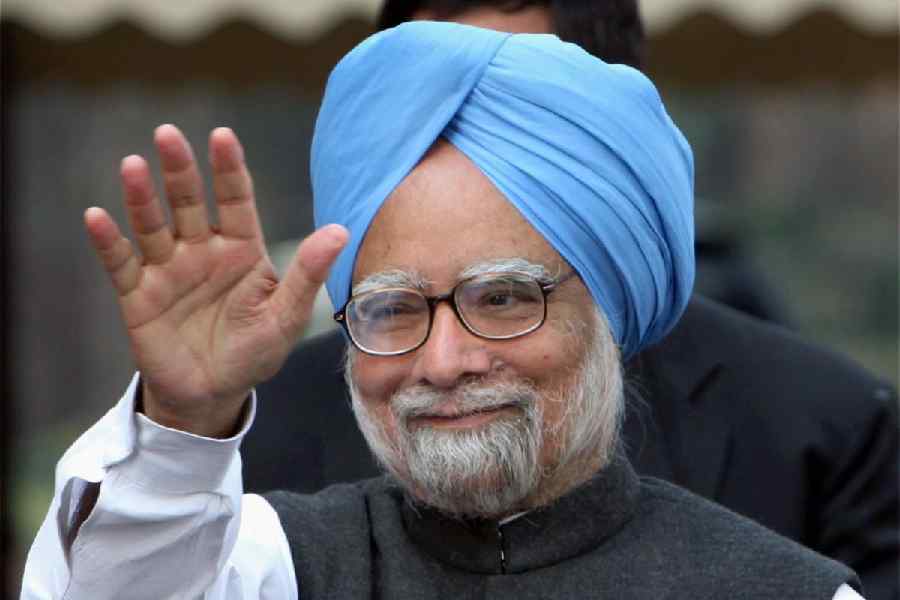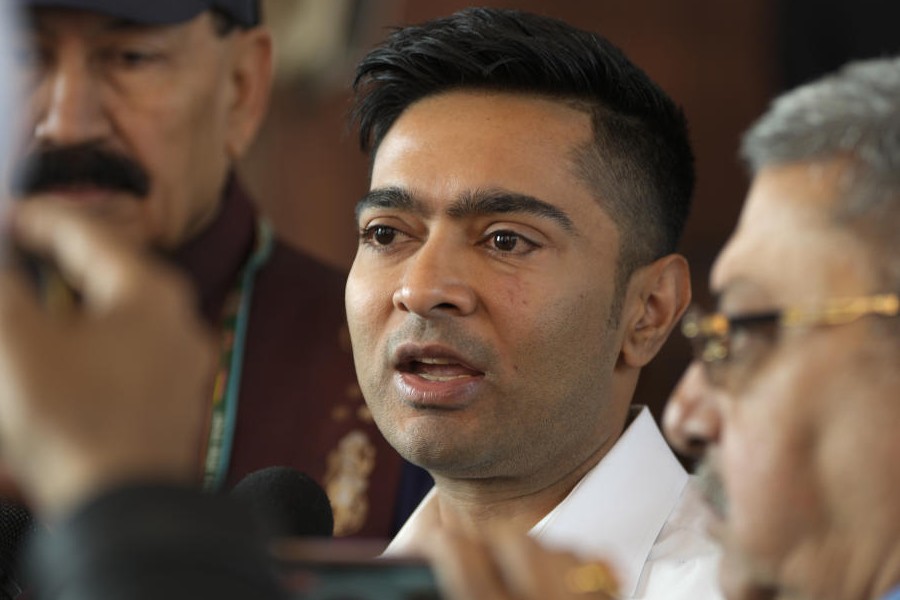 |
| Pic by Jagan Negi |
Brand Tarun Tahiliani is on a roll. The ace designer has got his fingers in multiple pies and is on an expansion spree in India. His Fall-Winter 2011 collection is on the drawing boards and is slated to make a sparkling debut in Paris in March 2011.
And all the while he’s keeping an eye on forthcoming international trade shows and focusing on couture deliveries in India and abroad. And if that isn’t enough, he’s styling some of India’s upcoming high-profile weddings (one of which is coming up in Calcutta).
He’s as cutting-edge a businessman, as he is designer: “I’m looking for a higher purpose in life now, to do better in everything and to tread new boundaries,” says Tahiliani.
 |
| Actress Shilpa Shetty is the embodiment of the Tarun Tahiliani woman Pix: Rupinder Sharma |
So, after taking the Tarun Tahiliani signature to the metros, he’s eyeing Hyderabad, Nagpur and some cities of Punjab next to host couture exhibitions and unlock smaller versions of his Delhi stores.
And, no more tears if you can’t afford a Tarun Tahiliani outfit. For, he’s just unveiled a pocket-friendly edition of Tarun Tahiliani ready-to-wear western wear for Wills Lifestyle stores.
The line is all about simpler, toned down versions of his signature designs and you can pick from tunics, skirts, shirts and dresses. “I’ll probably introduce my signature gilet as well but the Wills line has kept the brand DNA intact,’’ he says. The price tags are as low as Rs 3,000 and Rs 8,000 at the most expensive.
After giving the Indian woman jewelled tees, Tahiliani’s now giving her affordable jewellery watches as well. He’s collaborated with Timex watches for this one and has designed a collection of jadau (kundan) watches that are priced at a moderate Rs 10,000 to Rs 20,000.
 |
 |
 |
| Actress Chitrangada Singh lights up the ramp at the WLIFW grand finale in a Tarun Tahiliani gauze sari Pix: Rupinder Sharma |
But Tahiliani, 48, who makes the cut as one of India’s most expensive couturiers, says that he’s no longer driven by money. While he admits that he will have more money in times to come, that’s not exciting him anymore. His priorities have shifted seamlessly.
“I don’t want to own a private jet or luxury cars. I would rather buy buses for my workers so that travelling becomes easier for them; I also want to serve them hot breakfast when they check-in at work,” says the designer, a business school graduate who detoured into the world of Indian fashion.
At the Tarun Tahiliani Design Studio at DLF Emporio Mall in Delhi, you find Tahiliani engaged in a bridal fittings session. The bride-to-be has plans to visit the Golden Temple in Amritsar before her big day. “Please pray that your lehnga looks beautiful,” he jokes. The bride, who’s come from Indonesia, is unperturbed. For, the first trial of her made-to-order wedding lehnga has gone off rather well.
For Tahiliani, comfort is one of the crucial keys to a great outfit. “If you are not comfortable, you cannot feel beautiful — even in a multi-million dollar gown,” says the designer.
The Tarun Tahiliani woman is perhaps best represented by act- ress Shilpa Shetty. And no surprise that she’s us- ually the shows- topper of his well- attended shows. “Shilpa is candid about being a middle class girl who made her life magic through hard work. She also has a dancer’s grace and a yogini’s flexibility. I love the whole package,’’ he says.
What makes Tarun Tahiliani …well…Tarun Tahiliani? According to Sunil Sethi, president, Fashion Design Council of India (FDCI), Tahiliani devotes a lot of time developing his products — with full focus on each. “His clothes have a powerful visual impact because of the intricate detailing and his mastery of the drape,” says Sethi.
According to contemporary Indian set designer, Sumant Jayakrishnan, who has collaborated with Tahiliani on several occasions, Tahiliani stands tall primarily because of his vision. “He has a keen eye for what is beautiful to which he lends a timeless appeal through his craft,” says Jayakrishnan.
Model Nayanika Chatterjee Singh who began her career by modelling for Tahiliani feels that while many designers focussed on western wear, it was Tahiliani’s ability to take Indian dra- ping (with elements like pre-plated drapes) to another level that made him stand out.
Tahiliani along with wife Sailaja — the couple will celebrate their silver wedding anniversary next month — started out with a multi-brand outlet, Ensemble, in Mumbai back in 1987.
They opened doors with collections from the five top reigning designers of the day — Abu Jani and Sandeep Khosla, Rohit Khosla, Anuradha Mafatlal, American fashion designer Neil Bieff and label Anaya (started by Anita Shivdasani and Sunita Kapoor, actor Anil Kapoor’s wife) and their own label, Ahilian. “It was just a concept and luckily we happened to be at the right place at the right time,” says Sailaja (who’s better known as Sal).
Tahiliani says what triggered his desire to start Ensemble was the realisation that quality garments manufactured in India were all imported. “It was appalling that our best apparel went to the white man and we got the worst,” he says. What’s more, retail standards in the country, he says, were dismal.
“Even if you wanted to try out a salwar kameez you had to slip it on over what you were wearing because there were no trial rooms or organised stores at that time,” recalls Tahiliani.
Today, while Sal handles business development, Tahiliani is focused on his designs, his studio and factory. The other crucial arms of the business — merchandising, marketing, finance and strategic directions for Ensemble — are looked after by his sister, Tina Tahiliani Parekh who joined him in 1990.
 |
| The designer and his wife Sailaja will celebrate their silver wedding anniversary next month |
Tahiliani recalls growing up in south Mumbai in the ’60s in a very Anglophile environment “where people speaking Hindi were looked down upon and kids took piano and ballet lessons.”
His father was chief of naval staff and later governor of Sikkim. When Tahiliani was a teenager his father moved to Delhi. Next, he went to study at The Doon School in Dehradun where he mingled with boys from Punjab, Uttar Pradesh and the rest of the country. “For a South Bombay snob like me, it was a cultural shock and an eye-opener in a good way,” he chuckles.
After finishing school, Tahiliani joined St Stephen’s College in Delhi but left to study Business Management from Wharton Business School, University of Pennsylvania, where he met the New York-raised Sal. On returning, he was set to join the family business of selling oil-field equipment — which he felt was a lot of tedious work. He married Sal in 1985 and some years into their marriage she mooted the idea of starting a designer brand store.
Sal who had moved to Mumbai after their marriage began modelling to support her husband while he was trying to find his feet in the business. It was during a photoshoot that she met many designers including Rohit Khosla, who became one of the designers whose clothes they retailed at Ensemble.
Before launching Ensemble, he and Sal hired some tailors to create extra clothes just in case the five designers on-board didn’t deliver on time.
But the store made waves from the start and Tahiliani decided to sharpen his skills as a fashion designer. In 1991 he left for the Fashion Institute of Technology (FIT), New York, where he took a “a crash course in technique’’.
He returned to Mumbai in 1992 during the time of riots. By now his father had settled in Delhi so Tahiliani also decided to move to Delhi and started his business afresh in the capital, while his sister handled Ensemble in Mumbai.
By 1994 Tahiliani held his first solo show at the Dorchester Hotel in London. In 2003 he had another first to his credit — he became the first Indian designer to be invited to participate at the Milan Fashion Week. “It was a great ego trip,’’ he says. He showcased at Milan two years running. “It was great exposure but I didn’t want to become irrelevant in my own country just to be relevant in global markets,” says Tahiliani.
But that didn’t stop him from showcasing at New York, London, Tokyo, Milan, Singapore, Moscow, South Africa and Karachi and retailing at international stores.
The designer, who works six days a week, abhors the portrayal of fashion designers as party animals. “The Page 3 culture is a very sad representation of our times,” protests Tahiliani. He is also tired of the proliferation of Indian fashion weeks. “It is like indigestion caused by over-eating,” says Tahiliani.
He loves to unwind by travelling (which he complains is a rare treat). And most of his pleasure trips with his wife and two boys — Anand, 22, and Jahan, 20 — aren’t just about luxury like the last trip to Thailand when he and Sal exercised six hours a day. “At this age I look forward to exercising and relaxing breaks,” says the designer.
For now, Tahiliani is content with his work. And with every fashion show he intends to give a serious message to the people about reinterpreting Indian heritage in a contemporary way of life.











